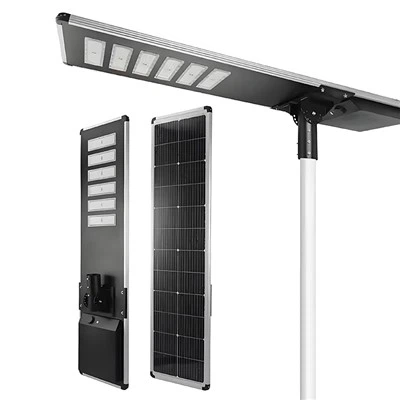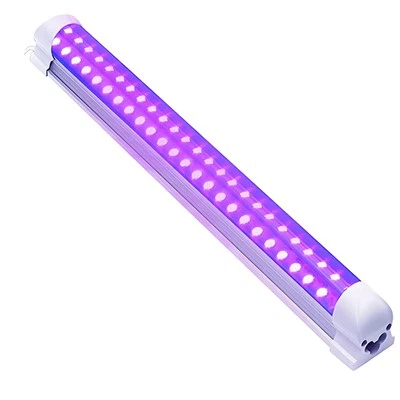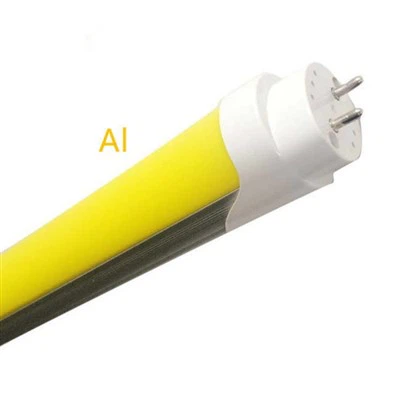Voltage drop must be addressed since it may jeopardize the intended results of your lighting design. This phenomena describes how the brightness of LED strip lights gradually decreases with increasing distance from the power source. 12V LED strips exhibit a considerable resistance in this situation; their capacity to sustain brightness over a larger region makes them a great option for large areas, guaranteeing a steady light.
The LED strip lighting's voltage drop
As a result, when comparing 5v and 12v LED strips, the 12V version usually emerges as the better option for extensive installations. However, as 5V strips are designed to function best over shorter distances, their usefulness shouldn't be disregarded. The risk of voltage loss is essentially eliminated in situations with smaller-scale projects or divided installations, such as complex art installations or specially designed computer configurations.
The 5V strips provide consistent and effective illumination in tiny spaces because of their modest size and versatile design. However, if these strips are overextended, performance may suffer. In order to avoid any possible flaws in the finished product, it is crucial to take into account the consequences of the LED strip light voltage while designing an ambitious lighting project.
Showdown of Energy Efficiency
Energy efficiency is a crucial factor in the glowing world of LED lights, thus it is essential that the product you select-a competitor in the LED strip voltage market-be the best in its class. A 5V strip could first seem to be an affordable alternative that provides a low-power solution while aligning well with the principles of energy saving. In smaller, more enticing configurations, like those seen within caravans, this alternative really pops.
However, the situation becomes more complicated. The 12V LED strips retaliate with the notable benefit of heat dissipation, a flexible feature that enables cooler operations and may improve energy efficiency across long distances.
Imagine the 12V LED strips moving across wide areas with ease, much like experienced marathon runners, maintaining energy efficiency casually throughout their route. When choosing between a 12v and 5v LED strip, this feature is essential. The problem is that total efficiency is mostly dependent on your consumption and particular demands.
Choosing the appropriate instrument for the task is, in fact, a fitting comparison. The 5V LED strips naturally take center stage if your needs are more focused on small accents or a small number of applications, showcasing their energy-saving benefits. On the other hand, dependable 12V strips continue to be the best option for large-scale projects where the voltage of the LED strip is needed for an extended period of time.
Installation Tips
Despite its seeming simplicity, installing LED strips may involve much more than merely connecting, mounting, and using them. The difference between 5v and 12v LED strips has a lot of intricacy. The many voltage choices that such dynamic lights work on often determine how easy or difficult it is to install.
The 5V LED strips, for example, represent versatility, accessibility, and easy operation, much like a helpful neighborhood handyman. This continuous current light strip's features make it ideal for small-scale do-it-yourself projects. Indeed, because of their reduced power intake and voltage, these LED strings may be easily incorporated into a complex costume or used to improve a gaming setup with little effort or expense.
When you switch to 12V LED strips, you'll find powerful lighting fixtures that can turn huge spaces-like the walls of your living room or your patio-into glowing spectacles. An essential factor in guaranteeing smooth functioning is the need for a DC power source that matches the voltage of the LED strips. It's also important to keep in mind that soldering may be required for modification, regardless of whether the configuration uses a 5v or 12v LED strip, so having a readily available toolset is essential. The basic agreement is still that 5V strips are best for minor adjustments and simplicity, while 12V versions, with their higher robustness, are the better option for major makeovers and a strikingly bright display.
Analysis of Costs
When examining the financial ramifications of choosing between 5v and 12v LED strips, a diverse range of expenses and advantages becomes apparent. After preliminary analysis, 5V strips seem more accommodating to financial restrictions due to their lower input voltages, especially when used for smaller-scale projects. These light strips are a preferred choice for frugal consumers who want to add a splash of color and brightness without making a significant financial commitment since they need less resources in terms of power supply and installation accessories, representing noticeable cost relief.
Analysis of LED strip costs
Conversely, 12V RGB strips may provide better value propositions over extended periods of time, even if they would need a higher initial expenditure. Because these RGBW strips run at a greater voltage, they can cover bigger areas more effectively, especially in commercial situations like cafés where ambient lighting is very important for aesthetics. Additionally, the durability of 12V strips adds to their long-term value by lowering the number of units and power supply required to provide comparable, if not better, lighting effects. Since long-term investment and immediate spending must be carefully balanced in this LED strip voltage story, the decision will mostly rely on the size of your project and the depth of your financial ability.
Performance and Brightness
In the world of lighting, brightness is often compared to horsepower, which leads to a heated debate when comparing 5v and 12v LED strips. Navigating towards factual conclusions is essential, however, since voltage does not immediately determine brightness. Rather, the main factor influencing total brightness is the density of LED pixels, where the number of tiny light emitters crammed into a meter of an LED pixel strip determines the illumination level.
Performance, however, encompasses more than just brightness; it also includes endurance, lifespan, and, of course, resistance to voltage drop. Here, the 12V LED strips' benefit over their 5V counterparts is obvious: they are more effective at sustaining their brightness over long distances. When it comes to wiring, 12V LED strips are more flexible during setup and show less sensitivity to even the smallest changes. However, the 5V strips are the ones that firmly retain their footing when accuracy and fine control over individual LEDs are crucial, as in the case of addressable LED setups.
Optimal Use Cases
Practical applications are the main factor influencing the complex discussion around the choice between 5v and 12v LED strips. With their smaller form factor and reduced power consumption, 5V LED strips are the best choice if your goal is to illuminate complex models, customize PC cabinets, or improve wearable technology. They are set up to participate effectively in intricate processes that need accuracy.
On the other hand, 12V LED strips easily handle lighting tasks that need bigger interior spaces, like the desire to turn your living area into an Instagram phenomenon. These LED strips are perfect for a wide range of applications and are reliable tools for adding a uniform and uniform light to areas like cafés. Their ability to offset voltage drop, provide longer operating distances, and provide a well-lit environment-a critical factor to avoid any visibility issues-are their key advantages.
Lifespan and Durability
We go further into the intricate story of 5v vs. 12v LED strips by examining the characteristics of durability and longevity. It is indeed a desired goal to have your LEDs continue to perform for a long time, much like a fine vintage. Fortunately, both voltage variations have the potential to have long, bright lifecycles. But there could be a little edge in favor of the 12V strips-because of their ability to withstand voltage drop over longer distances, they would be less stressed, which would extend the amount of time they can radiate light effectively.
Although the 5V strips may seem rather delicate because of their design details, they are nevertheless strong candidates, especially when used in their appropriate capacities. They promise to reliably serve as your luminous help for a variety of applications, from accent lighting to cosplay and desk garnishing, with the right maintenance and use. They should also be able to withstand changes in LED technological improvements.
Safety Factors
Safety must always come first in any endeavor! When comparing 5v and 12v LED strip possibilities, each kind has to be handled carefully. In theory, the lower voltage linked to 5V strips suggests less safety hazards. As a result, they are more palatable to beginners in the field of "Do-It-Yourself" projects, particularly when it comes to situations like exposing young pupils to the intriguing world of LED lights for a school assignment. Reduced hazards in the event of an accident are correlated with the low voltage requirements.
However, 12V LED strips are by no means dangerous innovations. These strips run on safe, low-voltage direct current power, and as long as the technical specifications-which include the datasheet and conditions of service-are followed, they keep the operating environment completely safe. To ensure that your alluring luminous ambiance doesn't abruptly turn into an unexpected sight, make sure your transformer is not overloaded, choose a power source that is rated adequately, and ensure that your insulation is sufficient.
Commonly Asked Questions
What Makes a 12V LED Strip Different from a 24V LED Strip?
A comparison between the usefulness of 12v and 24v LED strip solutions is revealed when delving further into the nuances of voltage standards. For larger-scale applications, a 24V system is far more appropriate since it can more successfully compensate for voltage losses over long distances. But it's important to remember that higher voltages require the use of larger power supply and maybe more complicated installation processes.
Do 24 volt LED strips cost more than 12 volt and 5 volt strips?
When comparing the pricing structures of 24V and 12V LED strips, it usually becomes clear that the 24V versions are more expensive due to their sturdy architecture, which is intended for larger projects. Like other commodities, the cost difference is mostly determined by the size and complexity of your particular project.
Is it possible to use a 5v power supply with a 12v LED strip?
Trying to connect a 12V LED strip to a 5V power source would be like trying to convince a cat to go on an aquatic adventure-it is not a good idea. To keep your lighting designs safe and spectacular, you must follow the advised procedure of matching the voltage needs of your LED strips with the appropriate power supply.







